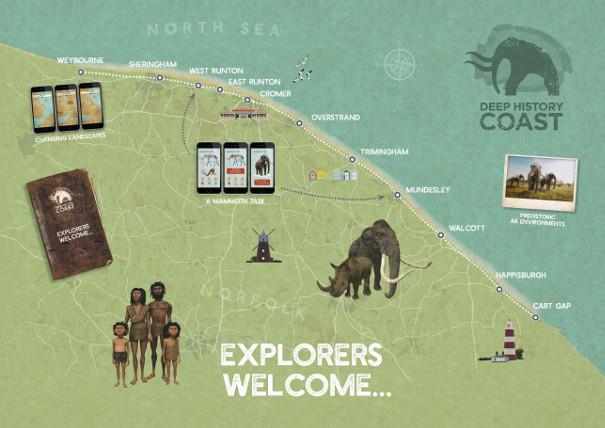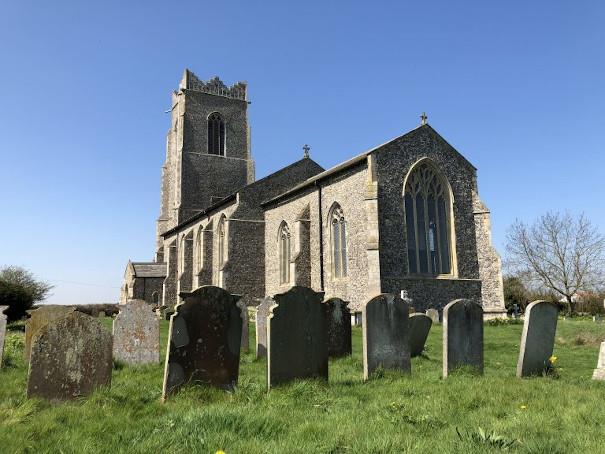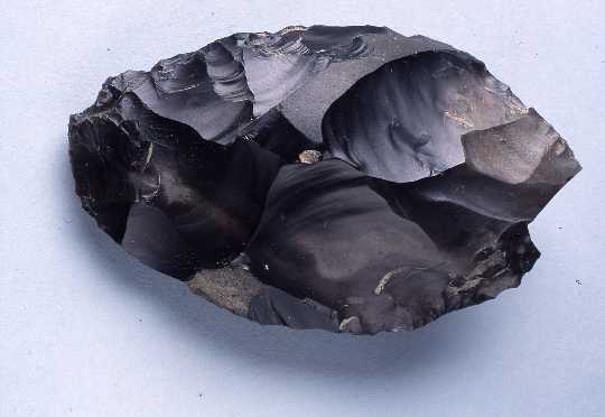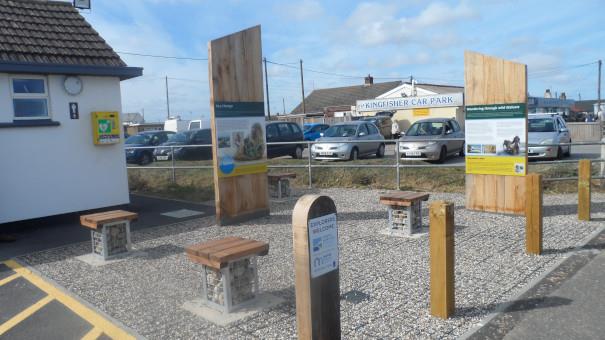North Norfolk's Deep History Coast is a 22-mile stretch of coastline between Weybourne and Cart Gap and is steeped in millions of years’ worth of history. With wonderful beaches, ideal for fossil and artefact hunting and a fascinating Discovery Trail, with fact revealing Discovery Points along the way, there is a lot to discover. There is a free downloadable Deep History Coast App to bring the trail to life linking with the Discovery Points along the way with information and interactive activities.
Through the app, you’ll be able to see the past come back to life and find out what life in Doggerland was like through the eyes of a hominin family, watch animals from 800,000 years ago roam the land and find out the names of any fossils you may find. Discovery Points are located at each of the main villages and towns. Here we focus on Walcott.

ABOUT WALCOTT
Walcott is a small village on the north Norfolk Deep History Coast situated between Mundesley and Happisburgh. Walcott is the only point where the coast road runs right along the edge of the sea providing great views. The beach neighbours Bacton, where a major sandscaping project took place between these two villages in 2019, to protect the coastline.
Walcott is a quiet village with a stunning sandy beach backed by a sea defence wall. Due to severe coastal erosion and damage by storms, particularly the North Sea flood in 1953 when much of the village was lost to the sea, defences have had to be built to protect the village. Walcott also sits on the Norfolk Coast Path so provides easy access to neighbouring coastal places and stunning seaside walks.
EARLY HISTORY
The name Walcott, is formed from the Celtic word 'Walecote', meaning village by the wood. The village was well known for its hall. Originally there were two halls, East Hall and West Hall. A map of Norfolk dating back to 1797 shows 'Walcott Hall' but it is not entirely clear if this is West or East Hall. In 1405, Thomas de Engain passed the manor of West Hall to Lord Willoughby and the West Hall was united to East Hall in Walcott.
The village church, All Saints at Walcott dates from the middle 14th century. The font stands on a Celtic limestone memorial slab and both are from an earlier church (13th century), the foundations of which may have been discovered in a nearby garden. The church has a tower stair turret that is set diagonally to the tower.

DEEP HISTORY
Today, Walcott village is on the Deep History Coast Trail with a Discovery Point next to the beach by the amenities, providing visitors with lots of interactive information about how the area looked millions of years ago.
The geology and geography of Walcott have been shaped by past ice ages, sea incursions and rivers that have deposited material over the underlying chalk. The last ice sheet left Norfolk around 16,000 BC allowing pine trees to colonise the region. Between 10,000 – 6000 BC the climate became warm and dry allowing alder, oak, elm and lime into the region.
During the Palaeolithic or Old Stone Age Era (pre 10,000 BC), the climate was very different as revealed by the bones of elephants, rhinoceros, hippopotamus and hyena found in this area. The majority of the artefacts recorded in the vicinity of Walcott from this period were flint hand axes like the one found just along the coast at Happisburgh. Rather like a multipurpose Swiss army knife, the flint hand axe could be used in a variety of ways; the sharp end for scraping, chopping and butchering and the blunt end could be used as a mallet.
At the Walcott Discovery Point, you can meet the augmented reality Hominin family who will chat to you about where you are standing. When the Hominins lived there it wasn’t a coast; the land stretched for miles across to Europe and animals such as the fierce scimitar toothed cat roamed the land.

Things to do in Walcott
Walcott has a vast sandy beach with local amenities nearby including a shop, pubs, café and fish & chip shop as well as places to stay. You can often see seals bobbing around in the water!
Walcott is also a great spot for walking as it sits on the Norfolk Coast Path and there is also a circular route to follow.

Related
Comments
Comments are disabled for this post.






